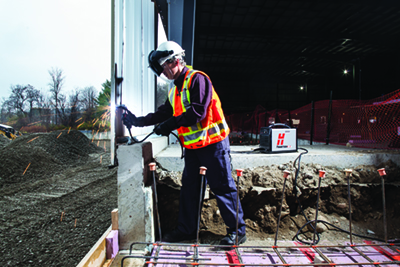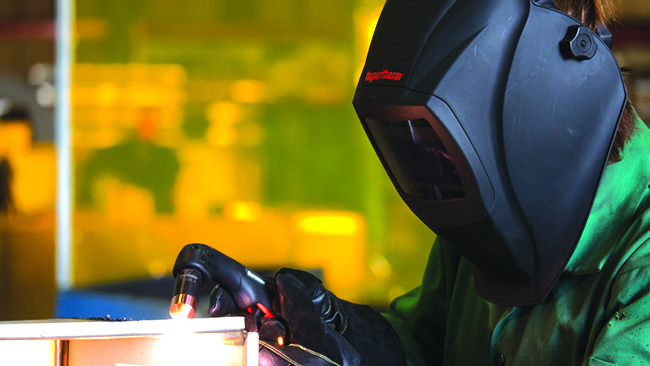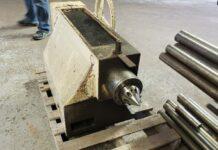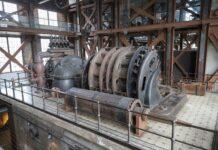When it comes to cutting or gouging metal, plasma is one of the safest methods you can use. However, care is still needed. After all, we are talking about a process capable of slicing through steel in mere seconds. At the highest level, there are two things you need to do before touching any plasma cutting system: protect your body by wearing the right personal protective equipment, and prepare your work area by making sure your system is properly grounded and flammable items are out of the way. This article explains how to do just that.
Choosing The Right Personal Protective Equipment
Let’s start with protecting your body. If you’ve used any plasma system, you’re probably well aware of the metal spatter and sparks created during cutting or gouging. Both have the tendency to fly in all directions and can cause serious burns.
 The spatter and sparks are only one issue though as you also need to be concerned by the ultraviolet and infrared rays emitted by the plasma arc. Just as the sun will burn your eyes and skin if you spend too much time outside, so too will a plasma arc. This is why it is so important to make sure your eyes and skin are well protected. Experts recommend wearing safety glasses with side protection and a minimum shade 5 rating. Better yet, wear a welding helmet or other shield to protect your entire face. After your eyes, your hands are probably the most exposed item on your body. The recommendation here is to wear leather welding gloves that come at least half way up your forearm. Adding a long sleeved flame retardant lab coat or welding jacket is even better.
The spatter and sparks are only one issue though as you also need to be concerned by the ultraviolet and infrared rays emitted by the plasma arc. Just as the sun will burn your eyes and skin if you spend too much time outside, so too will a plasma arc. This is why it is so important to make sure your eyes and skin are well protected. Experts recommend wearing safety glasses with side protection and a minimum shade 5 rating. Better yet, wear a welding helmet or other shield to protect your entire face. After your eyes, your hands are probably the most exposed item on your body. The recommendation here is to wear leather welding gloves that come at least half way up your forearm. Adding a long sleeved flame retardant lab coat or welding jacket is even better.
You’ll want it—like any clothing you wear when working with plasma—to be made of tightly woven material (leather, wool, heavy denim or twill all work well) and no pockets. If you do happen to wear clothing with pockets, make sure your pockets are empty and buttoned shut so a wayward spark doesn’t land in one. Avoid wearing pants with cuffs for the same reason.
 Even with all this protection, you still need to use common sense. Once you pull the trigger on a plasma torch, an arc will form almost immediately so make sure before you touch that torch that you are pointing it at the work piece and not at your body. Another thing you want to be careful of is that your hand isn’t touching metal near the cutting or gouging path. Some work sites recommend plasma operators wear no jewelry, especially rings. This isn’t a bad idea, as rings, like any metal, can conduct electricity.
Even with all this protection, you still need to use common sense. Once you pull the trigger on a plasma torch, an arc will form almost immediately so make sure before you touch that torch that you are pointing it at the work piece and not at your body. Another thing you want to be careful of is that your hand isn’t touching metal near the cutting or gouging path. Some work sites recommend plasma operators wear no jewelry, especially rings. This isn’t a bad idea, as rings, like any metal, can conduct electricity.
Your ears and nose also need protection. Though plasma isn’t nearly as loud as a process like air carbon arc gouging, it can still damage your hearing. A pair of ear plugs, similar to what you might wear when mowing the lawn, is the solution here. Air quality can also be a concern. The process of cutting certain metals and coatings can cause toxic fumes so make sure you have enough ventilation in your work area to properly dissipate smoke and fumes. Finally, make sure you have the right footwear like a pair of rubber boots with insulated soles.
Preparing your work area
Once your body is protected, there are two more things you need to worry about: electrical shock and fire. All plasma systems are high volt systems and as with anything involving electricity, the risk of shock is very real. Everything you learned about electrical safety as a kid applies here. Don’t stand in or near water. Make sure your clothes and footwear are dry.
 Inspect all of your connections (power cord, work lead, etc.) before you plug in. In addition, secure your work cable to your cutting table or another solid metal surface. A good solid ground is critical. If you do connect your cable to your work piece, make sure you don’t connect it to the side you plan to cut off. It’s also a good idea to throw some large rubber mats on the floor or at the very least, a large piece of plywood. Finally, If you are working with a larger CNC based system, experts recommend installing a quick-disconnect switch right next to where you normally stand so you can quickly turn off the power supply in an emergency.
Inspect all of your connections (power cord, work lead, etc.) before you plug in. In addition, secure your work cable to your cutting table or another solid metal surface. A good solid ground is critical. If you do connect your cable to your work piece, make sure you don’t connect it to the side you plan to cut off. It’s also a good idea to throw some large rubber mats on the floor or at the very least, a large piece of plywood. Finally, If you are working with a larger CNC based system, experts recommend installing a quick-disconnect switch right next to where you normally stand so you can quickly turn off the power supply in an emergency.
The number of sparks created when cutting with plasma makes fire a very real concern. This is why it’s important to make sure all flammable materials are out of the way. The general advice is to clear out anything within 35 feet of your torch. This applies to things above and below you as well as on your level.
For example, if you have a set of stairs next to your work area, you’ll want to be sure there aren’t any flammable materials on the stairs. If you’re up on a ladder cutting, look below you. If you can’t move the flammable item for whatever reason, then at the very least, cover it with an approved flame retardant blanket or cover of some sort. Also, do a quick check of the floor around you for any new hazards. Grease, oil, even an old discarded rag or tissue thrown on the floor can cause a fire.
People often don’t realize they need to be mindful of the things they can’t see. For instance, if your cutting table is near a wall, do you know what is inside that wall or on the other side of it? Knowing the answer to a question like that can save you trouble in the long run.
Also, know what you’re cutting, especially if it’s something other than a flat sheet of steel. If you’re cutting a pipe for example, you should know if anything has ever traveled through that pipe as the residue could cause a reaction when cutting. The same thing applies to empty drums and other containers.
The final caution as far as fire involves the gas cylinders prevalent in many shops. Not only do these cylinders need to be outside your 35 foot cutting bubble, they need to be stored at the right temperature and well-secured. You don’t want to risk a cylinder accidently toppling over when you pull on a hose or lead. The fireworks show caused by that sort of accident is nothing you want to see.
Though the above may seem like a lot, at the end of the day, it really comes down to protecting your body and preparing your workspace. The benefits to you and your neighbors, far outweigh the time and effort you might spend doing either one of those two things.




















